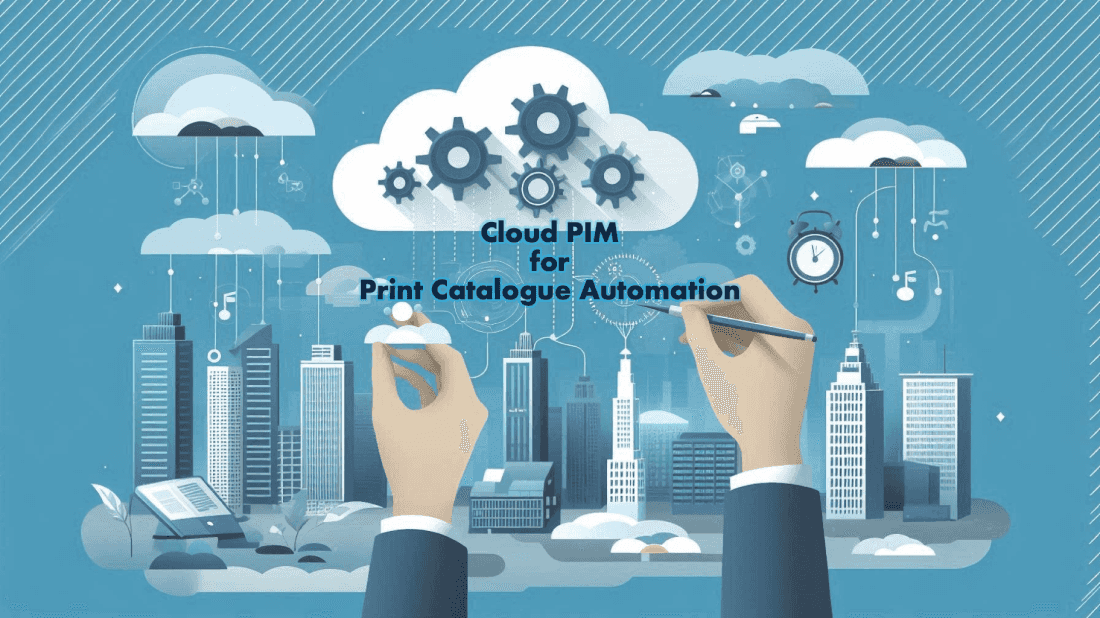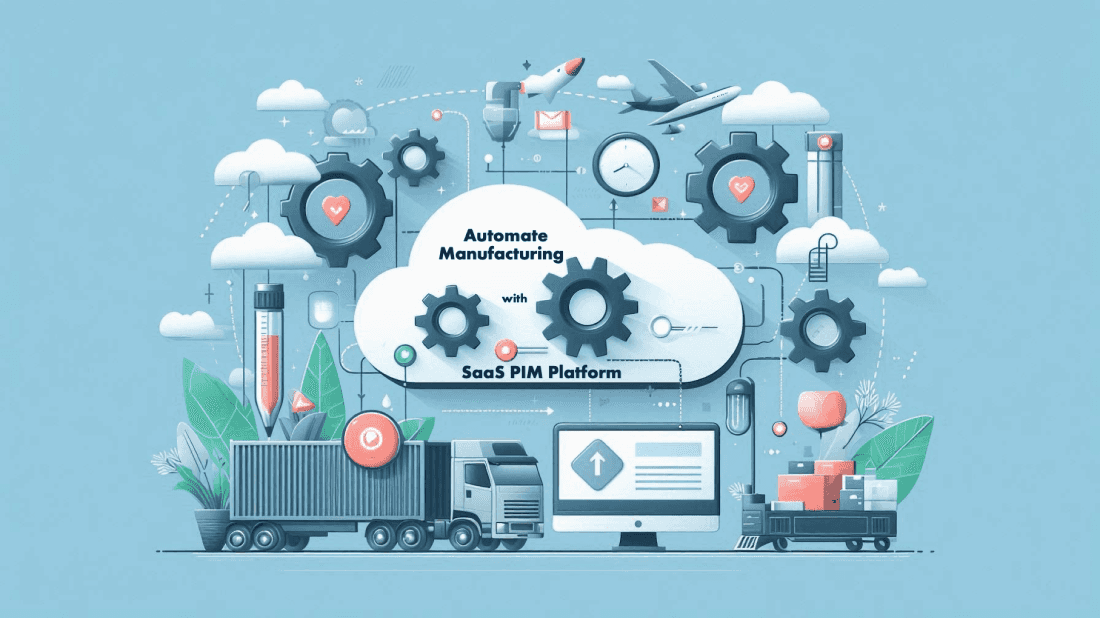May 13th, 2024
Understanding the Impact of PIM Systems for B2B Manufacturers
Categories:Product Information Management SystemImagine running a large warehouse without an inventory management system.
Workers spend hours searching for items, orders are delayed, and stock levels are frequently incorrect. Now, envision the same warehouse equipped with a state-of-the-art inventory management system. Everything runs smoothly, items are easy to locate, and stock levels are always accurate. This stark contrast illustrates the difference between using and not using a Product Information Management (PIM) system for B2B manufacturers .
Who Benefits from Product Information Management?
Contrary to popular belief, a Product Information Management (PIM) solution is not just a sophisticated tool for marketers. It’s a comprehensive system packed with features essential for B2B manufacturers, helping them to:
- Establish a single source of truth for product data.
- Manage product variants, bundles, and relationships effortlessly.
- Create engaging product narratives for various sales channels.
- Meet the demands of omnichannel-savvy partners and distributors.
- Easily expand into new markets.
- Drive sales and marketing results with high-quality product information.
PIM platforms are invaluable not only for marketing but also for product managers, category managers, business development teams, and IT departments. Most importantly, PIM systems unify these teams’ efforts into a seamless workflow.
What is a PIM System?
A Product Information Management (PIM) system is a centralized platform that manages all product data necessary for marketing and selling products across multiple channels. PIM systems are particularly beneficial for B2B manufacturers who need to manage complex product catalogs and ensure consistent product information across all touchpoints. When comparing PIM vs ERP, it’s important to note that while ERP focuses on managing business processes, PIM specifically manages product information.
Benefits of PIM for B2B Manufacturers
Streamlining Product Data Management
One of the primary benefits of Product Information Management (PIM) is its ability to streamline product data management processes from gathering and updating information to distributing it across various internal and external channels. Here’s how PIM facilitates this process:
Centralized Data Storage
PIM systems provide a unified repository for storing all product information, making it easy to locate and access data when needed. This centralization eliminates the need for multiple, disconnected sources of product data, reducing errors and inconsistencies and ensuring all team members have the most current information.
Improved Data Quality and Consistency
PIM solutions offer tools for data validation, deduplication, and enrichment, ensuring high-quality and consistent product data. By automatically identifying missing or inaccurate information, PIM systems help maintain data integrity, leading to better decision-making and enhanced customer experiences.
Simplified Data Import and Export
PIM systems streamline the import and export of product data from various sources, such as ERP systems, cloud-based PIM, PIM SaaS, or supplier data feeds. This simplified process keeps product information current and consistent across all channels, enabling businesses to respond swiftly to market changes and customer needs.
Enhancing Collaboration and Communication
PIM systems improve collaboration and communication among team members managing and distributing product information. Here’s how PIM enhances team collaboration:
Real-time Data Updates
Real-time updates in PIM systems ensure that all team members have access to the latest product information, facilitating faster decision-making and preventing miscommunications or errors.
Role-based Access Control
PIM systems offer role-based access control, providing customized access levels to team members based on their responsibilities. This helps maintain data security and allows team members to focus on their tasks without being overwhelmed by irrelevant information.
Facilitating Cross-functional Teamwork
By breaking down data silos, PIM systems promote cross-functional teamwork. A centralized source of product data encourages collaboration among various departments—marketing, sales, IT, and operations—enabling them to work together more effectively.
PIM for Marketing
Marketing teams benefit immensely from PIM systems. They ensure that product content, including images and videos, is consistent and up-to-date across all marketing channels. This centralization simplifies the creation and distribution of marketing materials, improving overall efficiency. Using PIM for marketing also enhances the customer experience by providing accurate and engaging product information.
Accelerating Time-to-Market
Time-to-market is crucial in today’s competitive environment. PIM systems help B2B manufacturers reduce the time required to bring new products to market.
Efficient Product Launches
Centralizing product data ensures accurate and consistent information is available across all channels during product launches, enabling faster and more efficient rollouts and helping businesses stay ahead of competitors.
Improving Supply Chain Coordination
PIM systems provide up-to-date product information to all supply chain partners, improving coordination and reducing errors. This leads to a more streamlined supply chain, faster time-to-market, and better responsiveness to market changes.
Reducing Operational Costs
By centralizing and automating product data management, PIM systems help B2B manufacturers reduce operational costs. This includes decreasing the time and resources required to manage product information, allowing employees to focus on more strategic tasks.
PIM Features and Use Cases
PIM systems offer a range of features that are beneficial for B2B manufacturers. These include data import capabilities, cloud PIM options, and PIM SaaS solutions that provide flexibility and scalability. PIM for manufacturers often involves managing extensive product catalogs and ensuring data accuracy across all channels. Enterprise PIM solutions cater to large organizations with complex data needs, while B2B PIM systems are designed to handle the specific requirements of manufacturers managing product information across various partners and distributors.
Some common PIM use cases include:
- Product Launches: Centralizing product data to ensure accurate and consistent information is available across all channels during a product launch.
- Supply Chain Management: CProviding up-to-date product information to all supply chain partners, improving coordination and reducing errors.
- Regulatory Compliance: Ensuring that all product data meets regulatory standards, reducing the risk of non-compliance and potential penalties.
Best Practices for Implementing a PIM System
To maximize the benefits of a PIM system, B2B manufacturers should follow these best practices:
- Define Clear Objectives: Establish clear goals for what you want to achieve with your PIM system.
- Engage Stakeholders: Involve all relevant stakeholders in the selection and implementation process to ensure buy-in and alignment.
- Focus on Data Quality: Implement strong data governance practices to ensure the accuracy and consistency of your product data.
- Leverage Advanced Features: Take full advantage of the advanced features offered by your PIM system, such as multi-language support and digital asset management.
- Monitor and Optimize: Continuously monitor the performance of your PIM system and make adjustments as needed to optimize its effectiveness.
Summary of Neurologik ProductHub
At Neurologik.io , we offer the ProductHub solution, an all-in-one PIM, PDM, MDM, and DAM system designed specifically for B2B manufacturers. Our platform centralizes, enriches, and synchronizes product data, ensuring accuracy and consistency across all channels. By significantly reducing integration costs and enhancing operational efficiency, Neurologik.io’s ProductHub helps manufacturers maintain seamless, up-to-date product information, improving market responsiveness and driving business growth.







